If you want big, juicy, and healthy tomatoes, it all begins with how you plant them. Many people just dig a hole and place the seedling in, but the real magic happens when you add the right ingredients to that hole. These ingredients feed your plant from the roots up, helping it grow stronger, produce more fruit, and stay healthy all season.
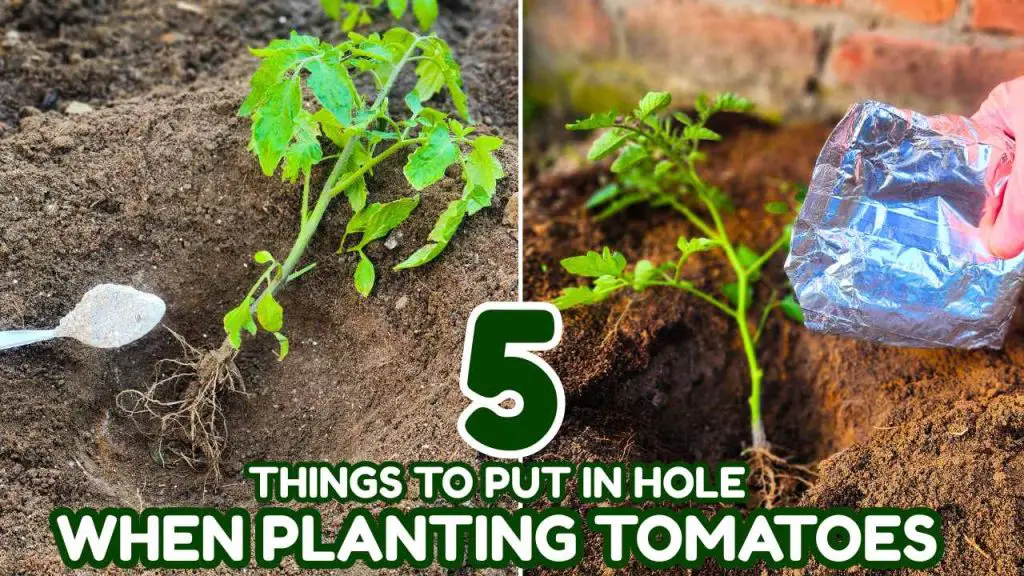
In this article, we will explain what you should put in the hole when planting tomatoes in your garden bed or container and what each ingredient does for the plant. Whether you’re a beginner or an experienced gardener, these tips will make your tomato plants grow faster, produce more fruit, and become the stars of your garden.
Fish Meal – Natural Protein Power for Your Tomatoes
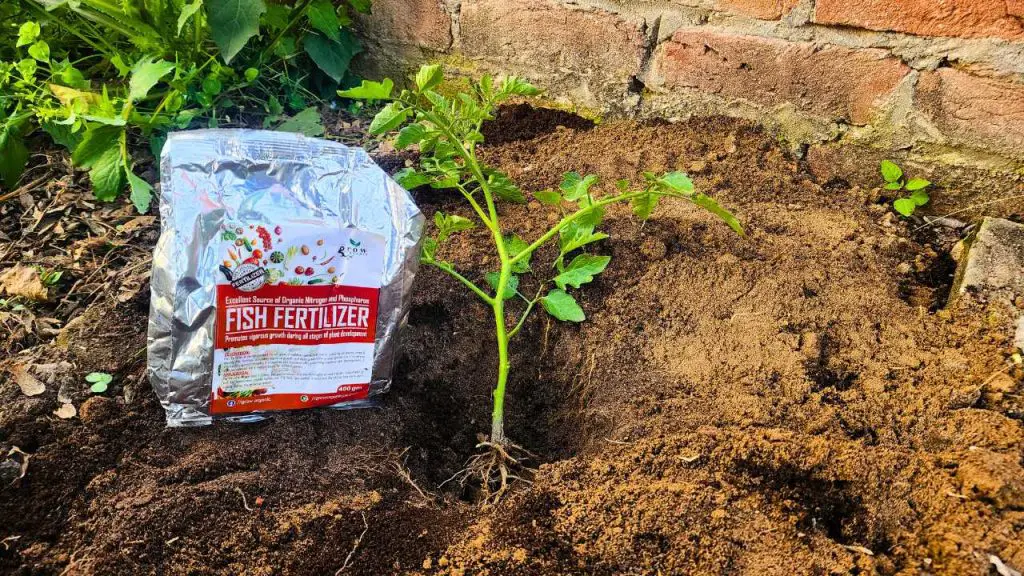
Fish meal is made from dried fish and is packed with nutrients. When you add fish meal into the hole before planting, it gives your tomato plant a strong start. The main benefit of fish meal is its high nitrogen and phosphorus content, which encourages root growth and healthy leaves. The nitrogen makes the leaves green and strong, while the phosphorus helps with flower and fruit development.
It also contains trace minerals that support overall plant health. Tomatoes love this kind of slow-releasing food because it keeps feeding them for a long time. Another bonus is that it can help improve the soil’s natural life, bringing in worms and good bacteria. When these are active around your tomato’s roots, your plant grows even better.
Fully Decomposed Manure – The Classic Organic Booster
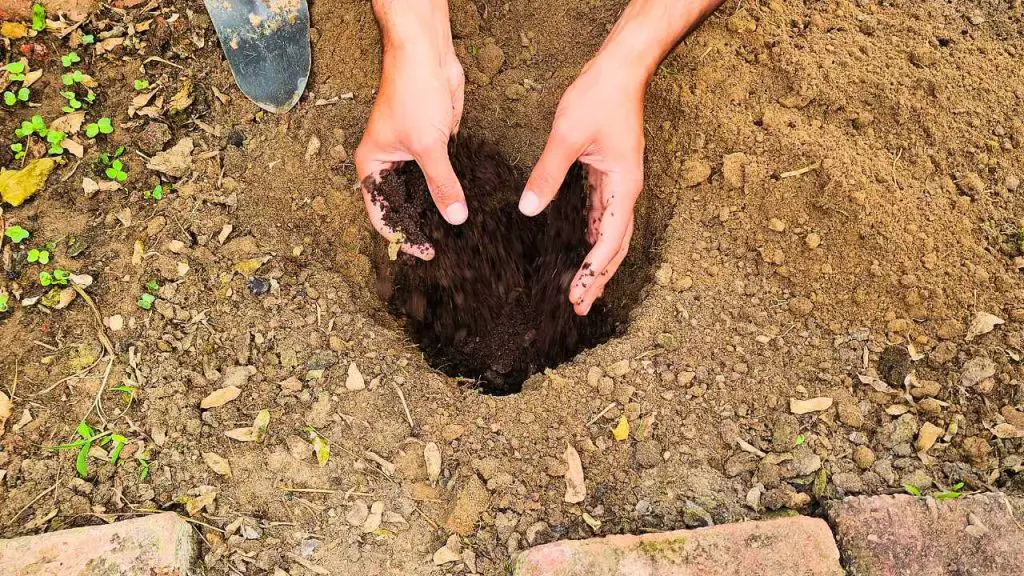
Well-rotted manure is one of the best things you can put in your soil. It provides a balanced amount of nutrients and improves soil texture. Fully decomposed manure contains nitrogen, phosphorus, and potassium – the three main things all plants need to grow. More importantly, it also makes the soil softer, which helps roots spread easily and take up nutrients.
If your soil is too dry or sandy, manure helps it hold water better. If it’s too heavy, manure breaks it up and makes it easier to dig. Always use fully decomposed manure and never fresh, because fresh manure can burn young tomato roots and may have weed seeds or harmful bacteria. Just a handful in the planting hole gives your tomatoes a boost they’ll enjoy for weeks.
Kitchen Waste and Epsom Salt – Turn Scraps into Plant Food
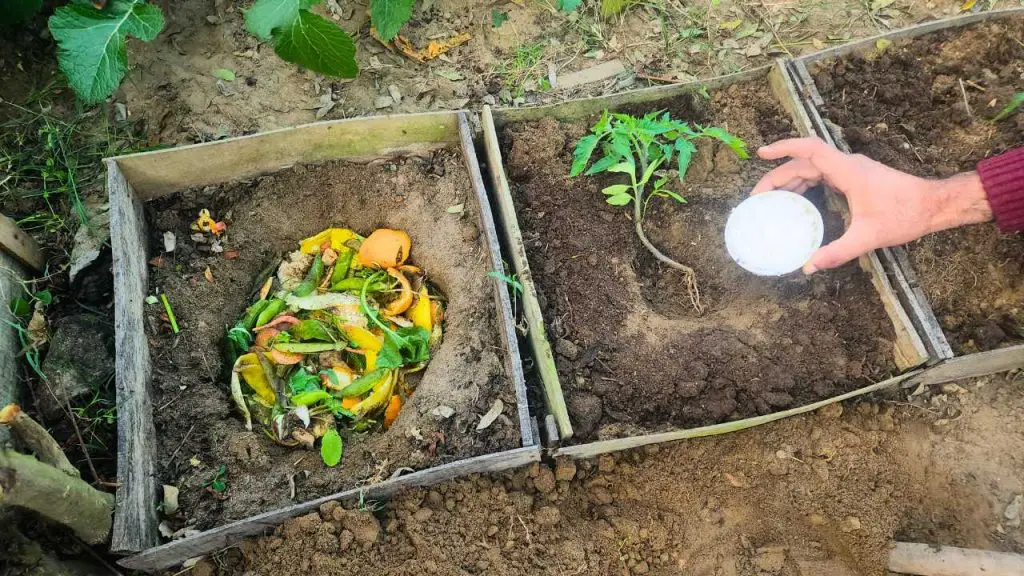
Don’t throw your kitchen scraps away. If you have things like banana peels, crushed eggshells, and vegetable leftovers, these can be buried deep in the planting hole. Over time, they break down and release nutrients like potassium and calcium, which help tomatoes produce strong stems and sweet, tasty fruit.
Adding a teaspoon of Epsom salt (magnesium sulfate) in the hole also helps. Magnesium is important because it helps the plant make chlorophyll, which is what gives leaves their green color and helps them turn sunlight into energy.
If your tomato plant doesn’t have enough magnesium, its leaves may turn yellow. That’s why a bit of Epsom salt at planting time can prevent problems later. Together, kitchen waste and Epsom salt are like a homemade slow-release fertilizer.
Worm Castings and Rock Phosphate – Feeding the Roots Naturally
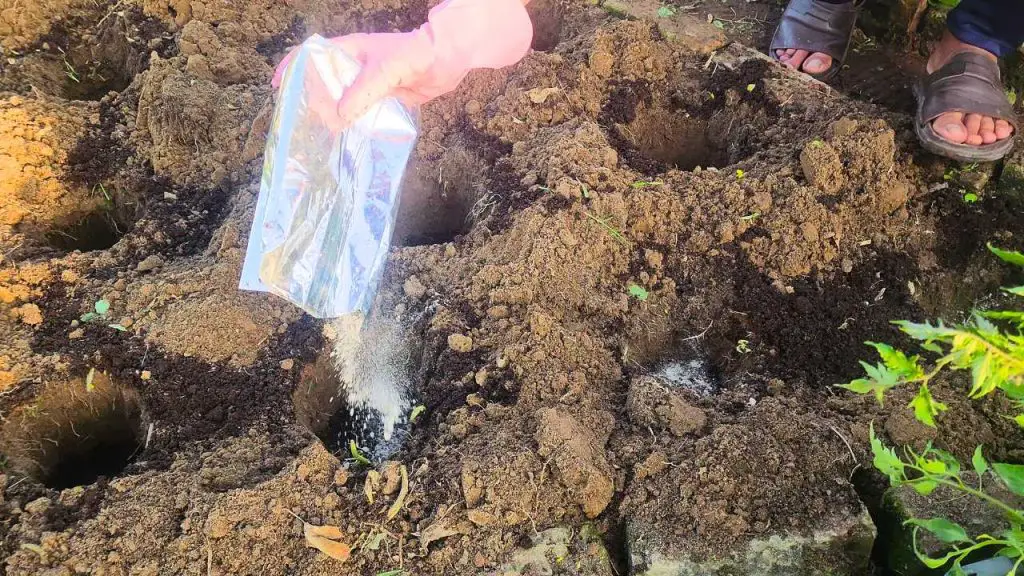
Worm castings are the droppings left behind by earthworms, and they’re one of the most powerful organic fertilizers you can find. They are full of beneficial microbes that improve soil health, help break down other nutrients, and protect plants from disease.
When you add worm castings into the hole, you’re giving your tomato plant a safe and natural way to grow. They also contain humic acid, which improves nutrient uptake. Pairing worm castings with rock phosphate is a smart idea because rock phosphate is rich in phosphorus, the nutrient responsible for strong root development and flowering.
Tomatoes that get enough phosphorus early on grow deep roots and produce more blossoms, which means more tomatoes later. Rock phosphate releases slowly, so it keeps feeding the plant for a long time without burning the roots.
Bone Meal and Neem Cake Powder – The Power Duo for Long-Term Growth
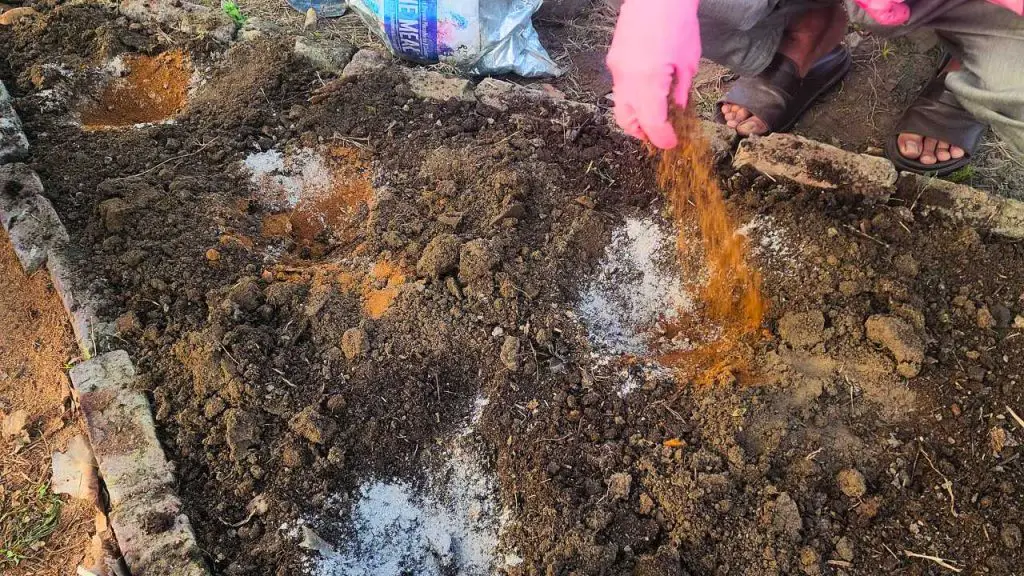
Bone meal is a fantastic source of phosphorus and calcium. When you add it to the hole, it helps build strong roots and supports fruit production. Calcium prevents a common tomato problem called blossom end rot, where the bottom of the tomato turns black and mushy.
That’s caused by a calcium deficiency, so having bone meal in the soil stops that from happening. Neem cake powder, made from the neem tree, is a natural fertilizer and pest repellent. It adds nitrogen to the soil, improves microbial activity, and helps fight soil pests like nematodes and harmful fungi.
When you combine bone meal and neem cake powder in the planting hole, you’re not only feeding the plant but also protecting it. This mix builds strong plants from day one and keeps them safe from common garden problems.
How to Use These Ingredients When Planting
Now that you know what to use and why, here’s how to apply them. First, dig a deep hole about twice the size of the root ball of your tomato seedling. Remove the seedling for a moment and add your ingredients. You can use a spoonful or handful of each item depending on the plant size.
For example, add one spoon of fish meal, a handful of decomposed manure, a piece or two of banana peel, half a teaspoon of Epsom salt, a scoop of worm castings, a teaspoon of rock phosphate, a small handful of bone meal, and a sprinkle of neem cake powder.
Mix them lightly with the soil at the bottom of the hole. Then, plant your tomato deep, burying two-thirds of its stem. This helps it grow more roots along the buried stem, making the plant stronger.
Why This Method Works So Well
This method works because it feeds your tomato from the root up using natural, slow-release ingredients. Instead of dumping chemical fertilizers on top of the soil later, you’re setting up your tomato for success right from the beginning.
Each of these items works in a different way – some feed the plant right away, some keep feeding it for months, and others help prevent problems before they happen. Plus, using organic and natural materials means you’re improving the soil for the future, not just for one plant. Healthy soil means healthy plants, and healthy plants mean lots of delicious tomatoes.
